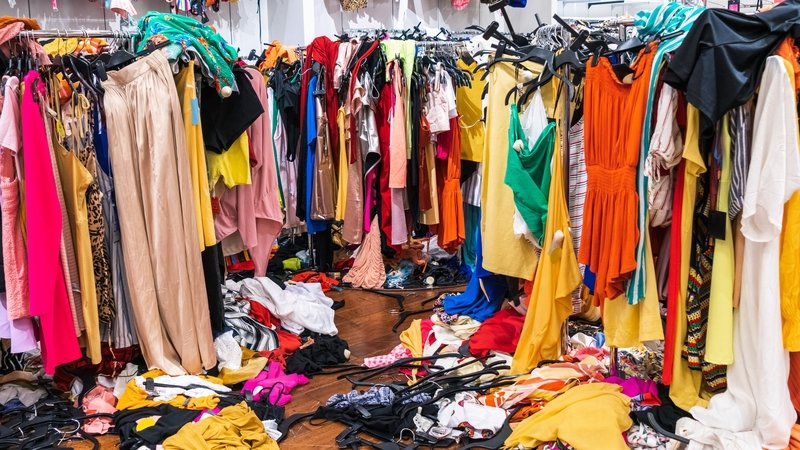Globally, it is estimated that one full truckload of textiles goes to landfill or incineration every second while less than 1% of material used to produce clothing is recycled into new products.
Globally more textiles are consumed than ever before and Ireland is no exception. An EPA study carried out by researchers at MTU in 2019 found that the per capita consumption of new textiles in Ireland is 53 kg per person per year – that’s almost 1 kg/week of new textiles purchased by every citizen!
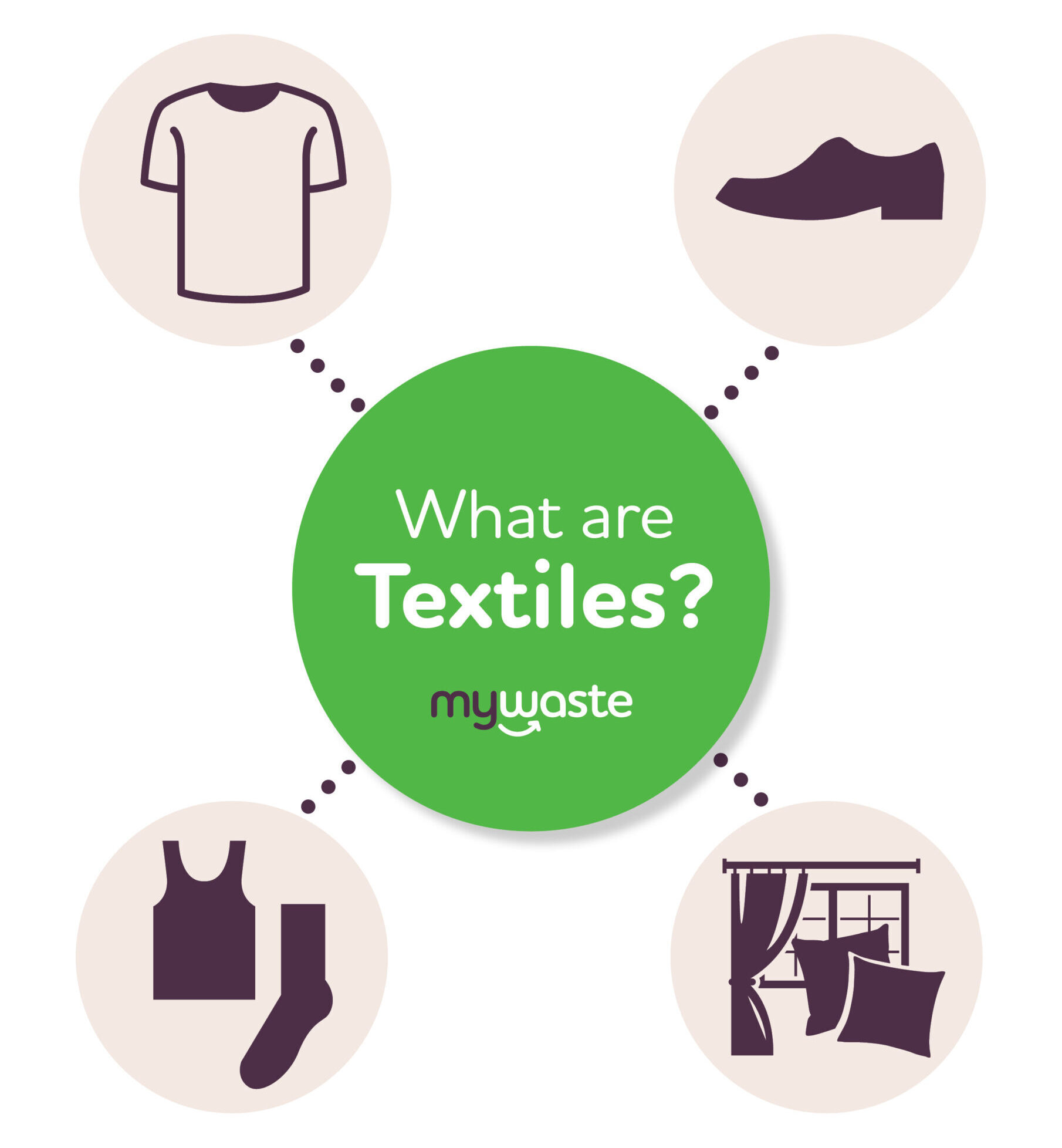
Alternatives
In terms of this rising tide of consumption it’s worth considering alternatives:
Reduce
It is easy to reduce textile consumption and waste by reflecting on what you really need by borrowing and swapping with friends and family, considering repair where possible, as well as choosing preloved and second hand as the first port of call.
Re-Use
Wear the clothes you love for longer, you don’t always need something new! Before you buy, rummage through your wardrobe because sometimes we forget about the things we already own and love.
We also encourage you to choose to repair your clothes. Daunting as it may seem with a little help you can give this a try – sewing classes are available across Ireland and online and many of these are aimed at making minor repairs to keep the items you love in use for longer. You can also find a directory of repair services on the Repair My Stuff website.
Recycle
Of course, we all have clothing and household textiles that we need to dispose of and how we go about this is really important.
Recent research from the Environmental Protection Agency found that textiles such as clothing and household textiles make up 9% of waste in the general waste bin.
Separate collection of textiles is available nationwide through a network of private and public bring banks and charity retail shops. We can all play a part in protecting our environment by ensuring that used textiles and footwear are collected separately so they can be prepared for reuse, repair and recycling.
Disposal
You can dispose of your used textiles in the following ways:
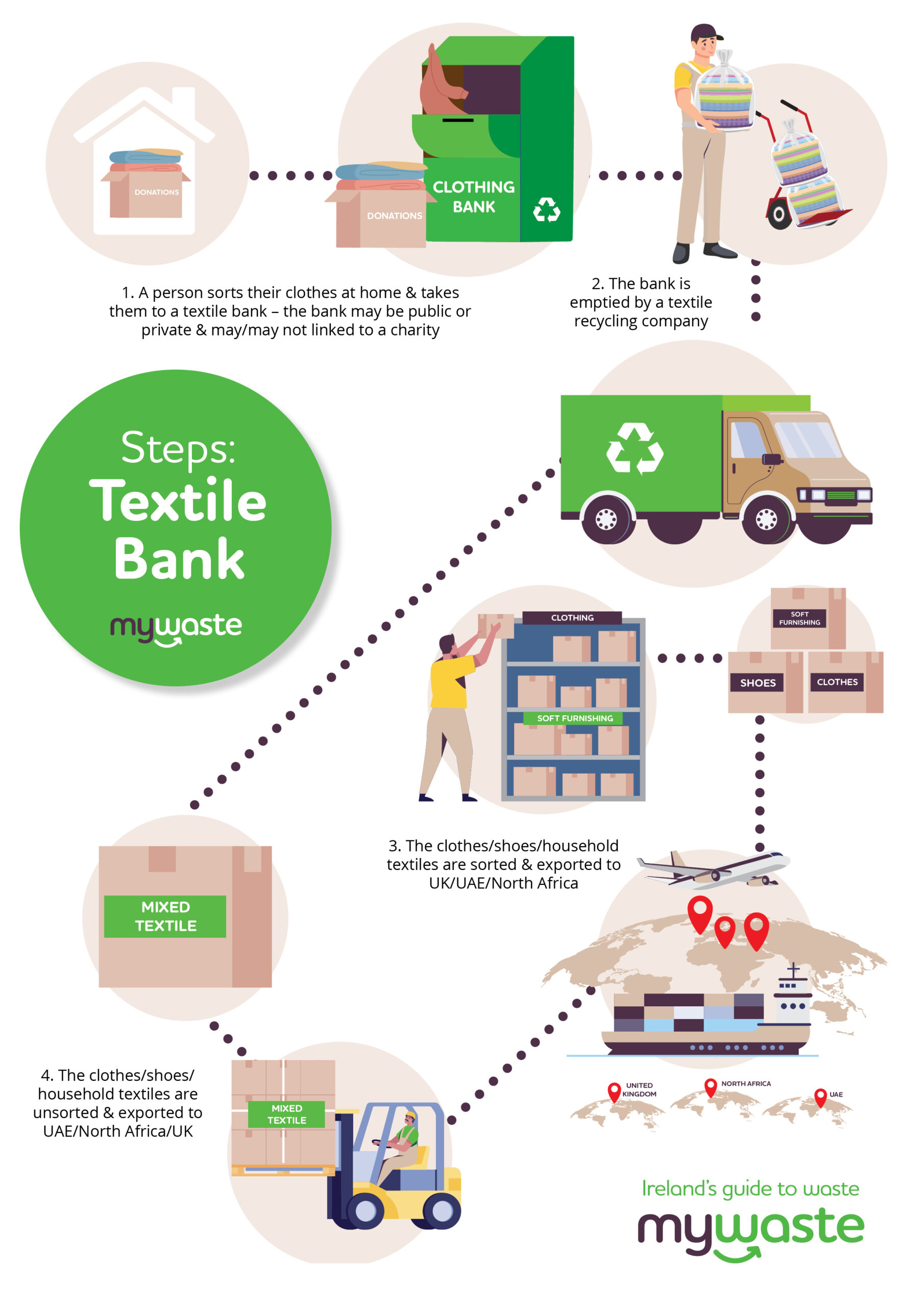
Textile Bring Bank Network
- Used textiles are collected by commercial collectors through the use of bring banks on public or private land. Commercial collectors consist of those collecting on their own behalf, on behalf of a charity or a local authority who have a contract in place with commercial operators to collect textiles.
- Textile bring banks are also available at your nearest civic amenity site. Find your nearest site.
- Follow the acceptance rules displayed on the banks and if you find that a bring bank is full, please do not discard used textiles on the ground.
Second Hand Retail including Charity Shops
- There are over 500 charity retail shops who accept public donations of used textiles for reuse through sale or otherwise. You can donate clothing, shoes and soft furnishings to these shops;
- Ensure all used textiles you donate are clean, dry and packed loosely in a bag;
- Many charity shops receive more donations of used textiles than they have capacity to deal with so shops can sell the surplus to commercial textile operators;
- Charity Retail Ireland for a list of all charities who take used textiles.
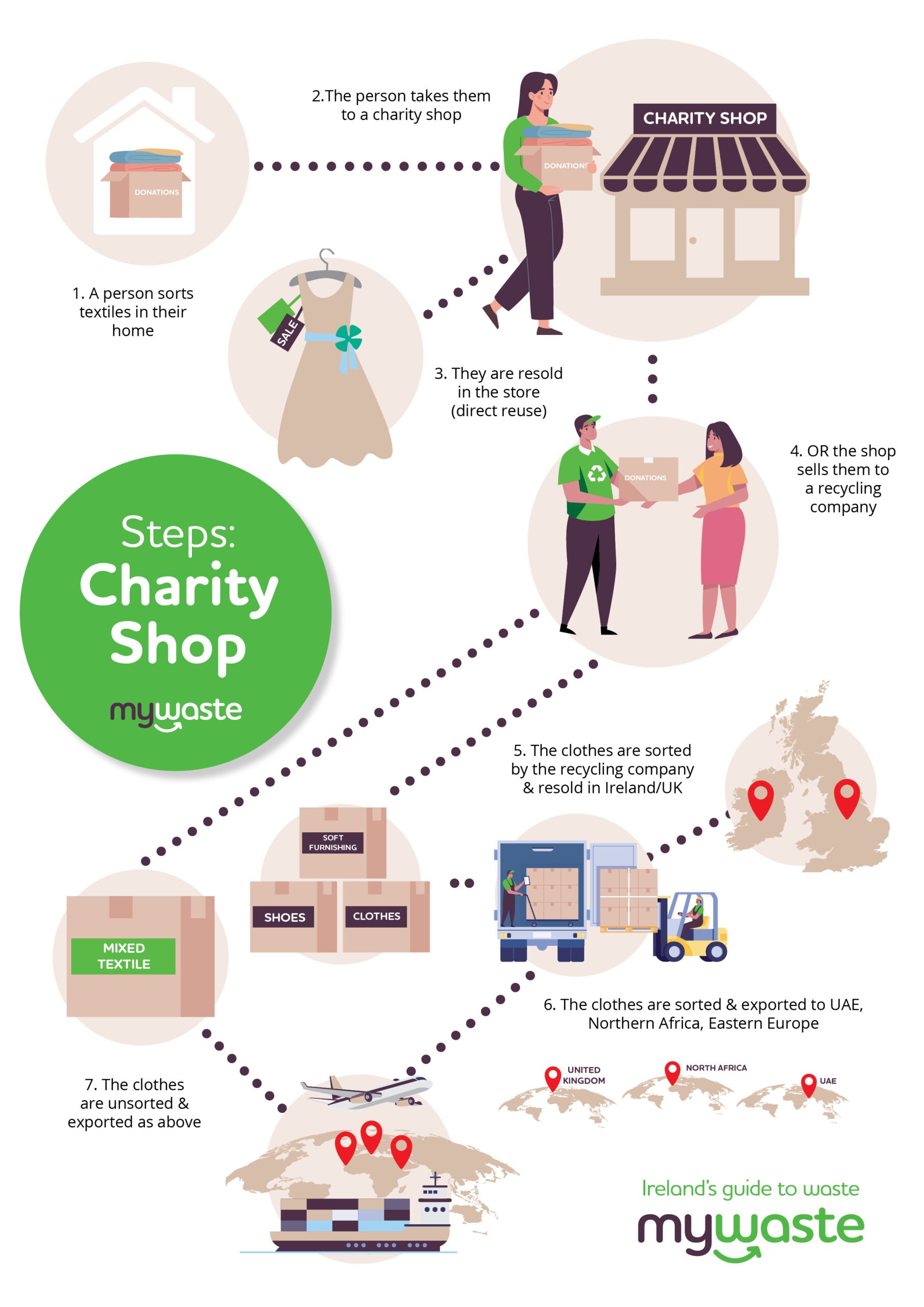
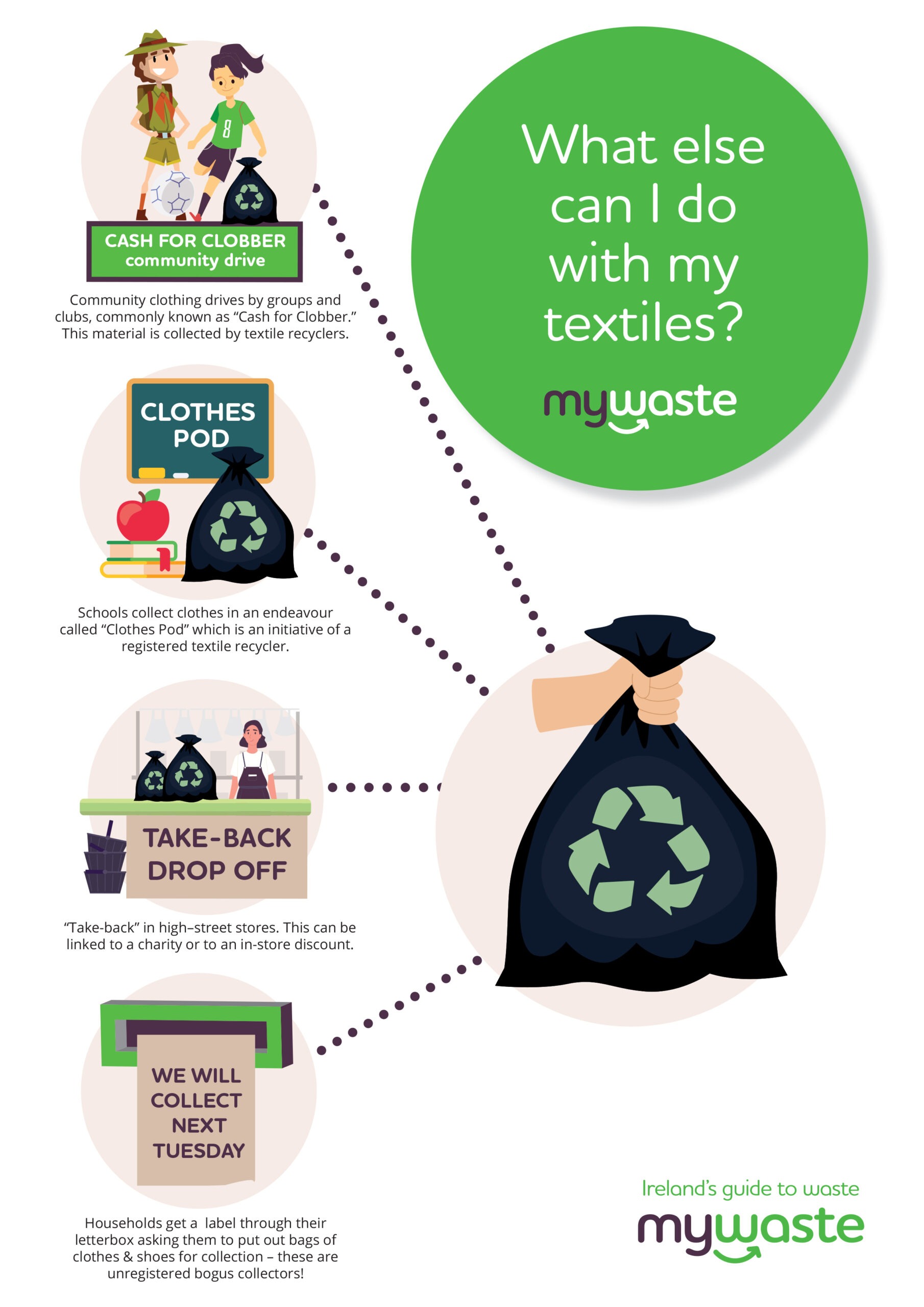
What else can you do with textiles you no longer want?
Clothes Swaps
Clothes swaps offer a great opportunity for clothes to have longer useful lives while helping address textile environmental impacts. Consider hosting one with family or friends. Go online to learn tips and tricks to make it a really successful event.
Take Back Schemes
Many retail stores offer a textile take back scheme where customers can donate used textiles to retailers to be reused or recycled in an effort to develop a more circular fashion industry.
Do you know what happens to your used textiles?
If you bring used textiles to a registered charity shop:
- Bags will be sorted by hand
- Most Items will be placed on display for sale
- Profits support the charity
- Unsold items may be sold to commercial textiles collectors
- Unsellable damaged goods may be sold to private companies for use as ‘rags’
If you bring used textiles to a Bring Bank:
- If registered to a charity – the charity may take the clothes for sale in their shops or sell any surplus to commercial textile collectors for a fee
- Used textiles may be sorted for reuse and redistributed nationally or may be exported overseas for sorting / reuse / recycling
If you return used textiles to stores:
- They are sold to a recycling company or donated to charity.
- Stores state that nothing ends up in landfill.
If you sell used textiles online:
- Item will be resold for a profit for reuse
If you put used textiles in your domestic waste or recycling bin:
- Clothing will go to incineration or landfill, causing further pressure on our environment.
- It is important to keep used textiles out of landfill because it helps to reduce greenhouse gases.
- A lot of clothing is made of organic material, meaning that it is derived from natural sources and is biodegradable. But landfills lack the oxygen needed for organic materials to break down so, when clothing does end up in a landfill, it decomposes through anaerobic digestion.
Play your part:
- Used textiles should never be placed in your domestic recycling or compost bins
- Badly soiled or torn clothing and household textiles that are unusable/unwearable should be disposed of in the general waste bin but this should be a last resort!
- Charity shops and clothing bring banks are the best option to dispose of your used textiles.
- Make sure that all your used textiles are clean, dry and packed loosely when you are donating to either a bring bank or second-hand outlet.
National Policy
Textiles is a key priority area for action to realise the Government’s circular economy ambitions and policy developments are centred around the Waste Action Plan for a Circular Economy 2000-2025. In 2022, the Department of the Environment, Climate and Communications established a Textile Advisory Group as a sub-Group of the Waste Advisory Group. It consists of relevant industry, community and regulatory representatives to identify opportunities to capitalise on the value of textiles present in Ireland and explore options to improve future circularity in the sector. Find out more here: gov.ie – Textiles Advisory Group.

